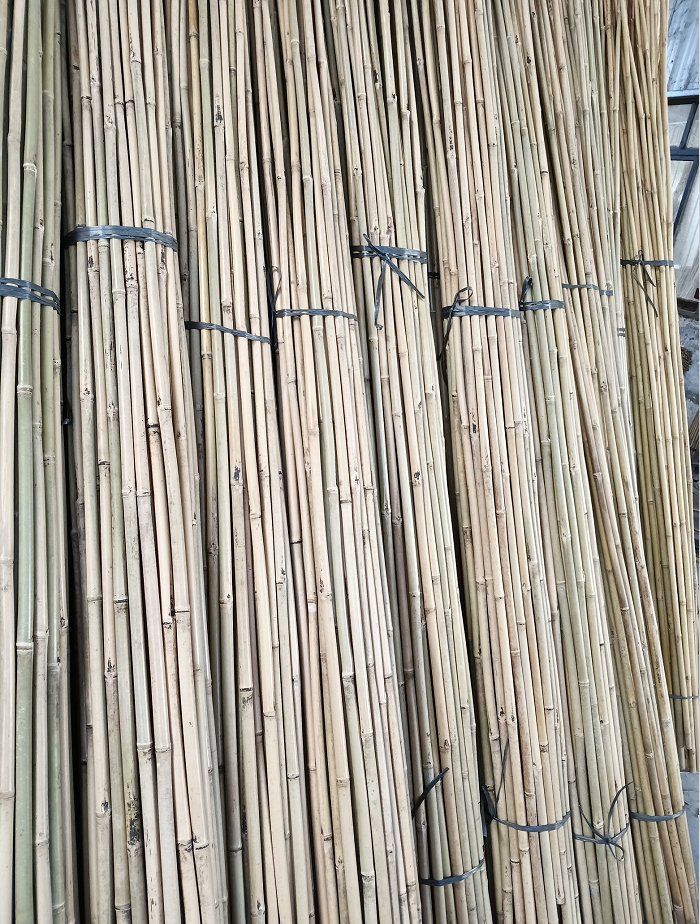- May 7, 2025
- Posted by: wellcoindustries
- Category: Bamboo Stake
Introduction
Healthy stems equal higher yields, fewer losses, and smoother harvests. Yet many operations still treat plant supports as an afterthought—until wind damage or toppled fruit trims profits. This guide weighs a bamboo plant stake against common metal alternatives so you can pick the right tool for every crop block. As a vertically integrated manufacturer and wholesaler, Wellco Industries supplies both options along with erosion‑control fabrics and other farm inputs, giving us a front‑row view of what really works in the field. You’ll leave with data‑backed pros and cons, a quick decision checklist, and sourcing tips that keep projects on schedule.

#1 Understanding Plant Support Needs (Who & Why)
#1.1 Stress factors that weaken stems
-
Wind shear: Gusts over 20 mph twist young tissue, causing micro‑fractures.
-
Fruit load: Tomatoes, cucumbers, and pepper cultivars often exceed 1 lb per branch at maturity.
-
Mechanical harvest: Shakers and conveyors add lateral force that can snap un‑staked vines.
#1.2 When staking is essential
-
Transplant weeks 1‑5: seedling roots anchor poorly; breakage risk spikes 35 % (University of Florida, 2023 field trial).
-
After pruning: removal of lateral shoots reduces counterweight, leaving stems top‑heavy.
Benchmark: growers report <2 % lodging when supports are installed before the first flower set; without stakes, failure rates climb to 12–15 %.
#1.3 Buyer personas
-
Greenhouse managers are targeting premium fruit grades.
-
Field contractors are paid by successful yield, not by the plant.
-
OEM/private‑label buyers are bundling stakes with grow‑kits for hardware chains.
#2 Bamboo Plant Stakes: Natural Strength & Sustainability
#2.1 How bamboo stakes are processed
Wellco sources mature moso bamboo (≥ 3 years old) from FSC‑certified groves. Culms are kiln‑dried to 12 % moisture, straightened, and polished to remove surface nodes—critical for smooth string‑tying and fewer splinters.
#2.2 Field performance case study
On a 60‑acre tomato farm in Sinaloa, switching from untreated birch dowels to 5‑ft bamboo stakes reduced mid‑season stem breakage by 18 % and slashed replacement labor by 8 worker‑hours per hectare (internal agronomic audit, 2024).
#2.3 Pros & cons
Advantages
-
Biodegradable; can be mulched post‑season.
-
Low cost—often 30–50 % cheaper up‑front than metal.
-
Naturally ribbed surface grips twine.
Trade‑offs
-
Diameter variability; must sort for uniform rows.
-
Limited multi‑year reuse (2–3 cycles with proper storage).
-
Susceptible to powder‑post beetles in high humidity if not treated.
#2.4 Environmental impact
-
1 hectare of bamboo sequesters ~30 t CO₂ annually.
-
Diverts ~2 tons of PVC stakes from landfills per 100 k plants (Wellco LCA, 2025).
#3 Metal Stakes: Durability & Reusability
#3.1 Common metals and coatings
-
Galvanized steel (most popular): zinc layer slows rust for 5–7 years.
-
Epoxy‑coated rebar: smoother surface; ideal for delicate vines.
-
Fiberglass‑cored composite: combines stiffness with lower weight.
#3.2 Grower insight
“At 2,000 acres, every extra install minute costs real money. Steel rod stakes paid for themselves in the third season because we stopped buying disposables.” —Vineyard operations manager, Central California
#3.3 Pros & cons
Advantages
-
5–10‑year lifespan; some growers report 15 + with rust‑block paint.
-
Uniform diameter speeds automated transplanter feeds.
-
Scrap value offsets eventual replacement cost.
Trade‑offs
-
3–6 times higher initial price than bamboo.
-
Heavier: boosts freight and manual handling strain.
-
Must inspect for sharp edges to meet worker‑safety audits.
#4 Bamboo vs Metal: Practical Decision Framework (How)
#4.1 Side‑by‑side comparison
| Metric | Bamboo Plant Stake | Metal Stake |
|---|---|---|
| Typical cost per 6 ft unit (USD) | $0.22 | $1.05 |
| Avg. service life (cycles) | 2–3 | 5–10 |
| Installation rate (stakes/hour, 2‑person crew) | 480 | 420 |
| Carbon footprint (kg CO₂e per 1 k stakes) | 18 | 95 |
| End‑of‑life | Compost/mulch | Recycle / scrap sale |
#4.2 Supply‑chain factors
-
Bulk availability: Wellco’s Asian and North American mills keep ≥5 M stakes in mixed diameters for just‑in‑time export.
-
Lead time: 20‑ft containers load in 10 days for bamboo, 25 days for custom‑coated steel.
-
OEM branding: Laser‑etched logos on metal or color‑dipped bamboo help retailers differentiate SKUs without new tooling.
#4.3 Quick specification checklist
-
Evaluate expected crop cycle length vs stake lifespan.
-
Factor freight cost per lb into total installed cost.
-
Confirm local waste or recycling channels.
-
Ask vendors for compression strength data at 10 cm from the tip.
-
Request pre‑season samples from Wellco Industries for on‑farm testing.
Conclusion
Choosing between bamboo and metal comes down to balancing longevity, sustainability goals, and labor economics. Short‑cycle vegetables or organic programs often benefit most from biodegradable bamboo, while long‑term vineyards recoup the higher upfront investment in steel. Need side‑by‑side samples or a landed‑cost quote? Contact Wellco Industries—our global warehouses and private‑label services make switching simple.
Frequently Asked Questions
Q1: How long can I store unused bamboo stakes?
Please keep them in a dry, well‑ventilated shed off the ground; under those conditions, they hold strength for two seasons before moisture starts to soften fibers.
Q2: Can metal stakes damage harvesting equipment?
When cut to the correct height and capped, galvanized rods clear most shaker headers. Inspect yearly for bends that could snag belts.
Q3: Are composite or fiberglass stakes safer for workers?
Fiberglass cores reduce weight, but splinters can occur if the epoxy outer layer chips. Provide gloves and rotate damaged pieces out promptly.
Q4: Do you offer custom diameters or colors?
Yes—Wellco mills produce bamboo from 8 mm to 30 mm and powder‑coat steel in RAL colors for easy row coding.
Q5: What is the minimum order for OEM branding?
Private‑label programs start at one pallet (≈ 5,000 stakes), including laser marking or heat‑transfer logos.
